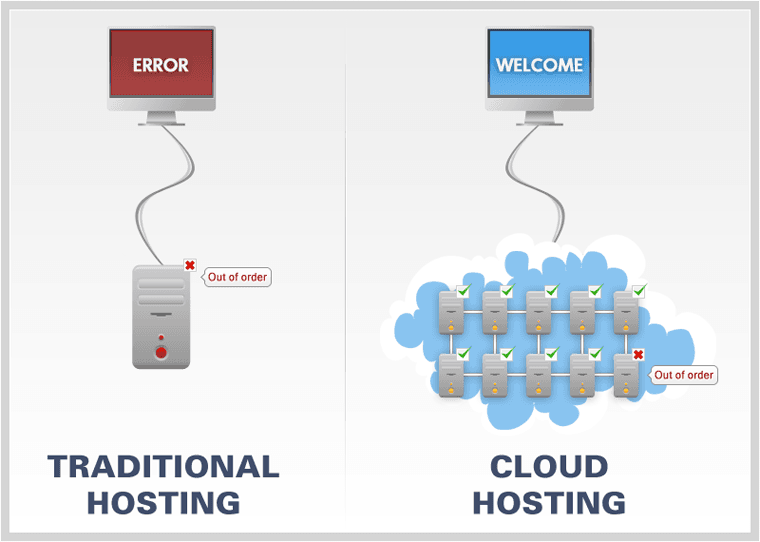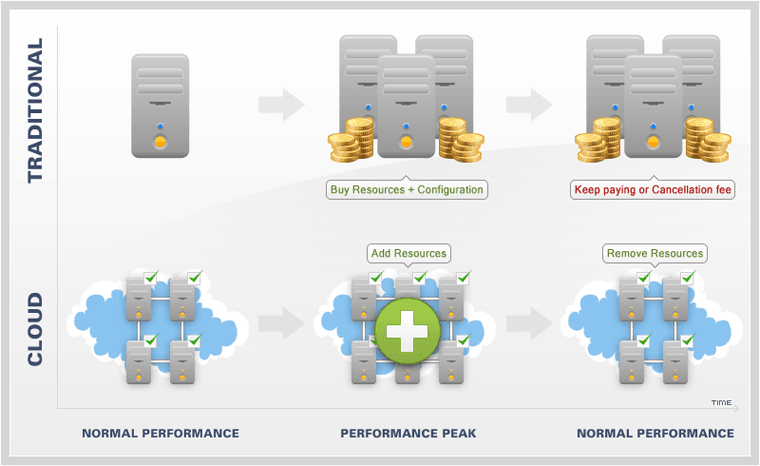About Shared Hosting
 In Shared Hosting, a client rents a certain amount of storage space on a single server. The resources of this server is usually shared between several websites, all which have rented some space on the server. This means that shared hosting is cheap because several websites pay to be hosted on one physical server, and needs very little maintenance since the host takes care of the technical aspects. It is therefore very common with small businesses and bloggers.
In Shared Hosting, a client rents a certain amount of storage space on a single server. The resources of this server is usually shared between several websites, all which have rented some space on the server. This means that shared hosting is cheap because several websites pay to be hosted on one physical server, and needs very little maintenance since the host takes care of the technical aspects. It is therefore very common with small businesses and bloggers.
Shared hosting has its drawbacks though. The most prominent is because the resources of one physical server are shared among so many websites, if the other websites receive a lot of traffic, or if they use up too many resources, the performance of your website will be negatively affected. Additionally, other issues like security breaches on other websites will also affect your website. There is also an additional single point of failure. If the server you are hosted on develops technical issues, all websites hosted on it will be directly affected.
When you buy a shared hosting plan, you are buying a defined amount of storage space and processing power. This is great if your website receives a predictable amount of traffic. However, if your website’s traffic is increasing, or experiences unpredictable spikes whenever you launch a new product or feature, shared hosting may prove to be a bottleneck to your productivity.
In such a scenario, you would need to buy more storage space or move to a plan that offers more space and more processing power. However, if traffic falls, you will be left paying for resources that you are not using.
About Cloud Hosting
Cloud Hosting is the Latest, and according to many, best type of web hosting available. For these reasons, it has created quite a buzz in recent times. It is very different from traditional hosting solutions and requires a lot of skill to use. Actually, it requires a team of people to make everything work. A good example of a website that uses cloud hosting is Google, and that is most probably why its website is never down.

As we have already mentioned, a cloud server works by separating a website’s information on several websites – could even be hundreds – which all work together. Depending on the page being viewed, different branches of the network move in to provide the required information while other branches remain inactive because you do not need any resources from them.
When it comes to pricing, prices of cloud servers differ greatly. How much you pay depends on the amount of space your website uses and how much traffic it uses. Therefore, the more space your website uses, the more you will pay. This can be seen as the only disadvantage of cloud servers and one that cannot yet be stabilized. It is not possible to have a cheap solution when so many components are needed to ensure that everything operates smoothly.

Whether a user wants to invest in cloud hosting entirely depends of them. Careful thought however has to be put on the future development of the website. While cloud hosting is becoming increasingly popular, it is still not the first option for people looking to host a website. Hopefully, the cost of hosting a website on a cloud server will reduce in the future because it is the most stable hosting solution available.
Differences of shared and cloud hosting
| # | Shared Hosting | Cloud Hosting |
|---|---|---|
| 1 | Several websites are hosted in one physical server | A website is located in several servers. Sometimes dedicated servers could be used. |
| 2 | You are allocated a specific amount of bandwidth and memory space | Resources are allocated to your website on demand |
| 3 | It is not possible to change the amount of resources allocated | It is possible to alter the amount of resources allocated at any moment |
| 4 | The web host takes care of all the technical aspects including maintenance | You are responsible for security measures and hardware maintenance |
| 5 | It is the cheapest hosting method for websites | It is the most cost efficient hosting solution |
| 6 | It is not the best option for websites that receive high amounts of traffic | It is suitable for websites that receive both low and high traffic because you only pay for resources that you use |
| 7 | You pay for allocated resources every month whether or not you use them | On Cloud Hosting, you pay for only the amount of resources that you use. |
| 8 | A technical failure on the server affects all websites hosted on it | Any issues on one server will not affect the performance of others |
| 9 | If one website receives an increase in traffic, all other websites hosted on the same server are adversely affected. | Increase of decrease in traffic of one website does not affect other websites on the server |
| 10 | Your data and information is only stored on one server | Depending on your need, a cloud server can be rented to you for even 5 minutes |
| 11 | It is easy for a user to maintain a website on shared hosting. | You need to understand the technical aspects of websites and maintenance to be able to use a cloud server |
Conclusion

Shared Hosting and Cloud Hosting each pack different features. If it is your first time hosting a website or if you are looking for a cheap hosting solution, shared hosting is a good option. While cloud hosting is cost efficient, you need to have technical knowledge.



